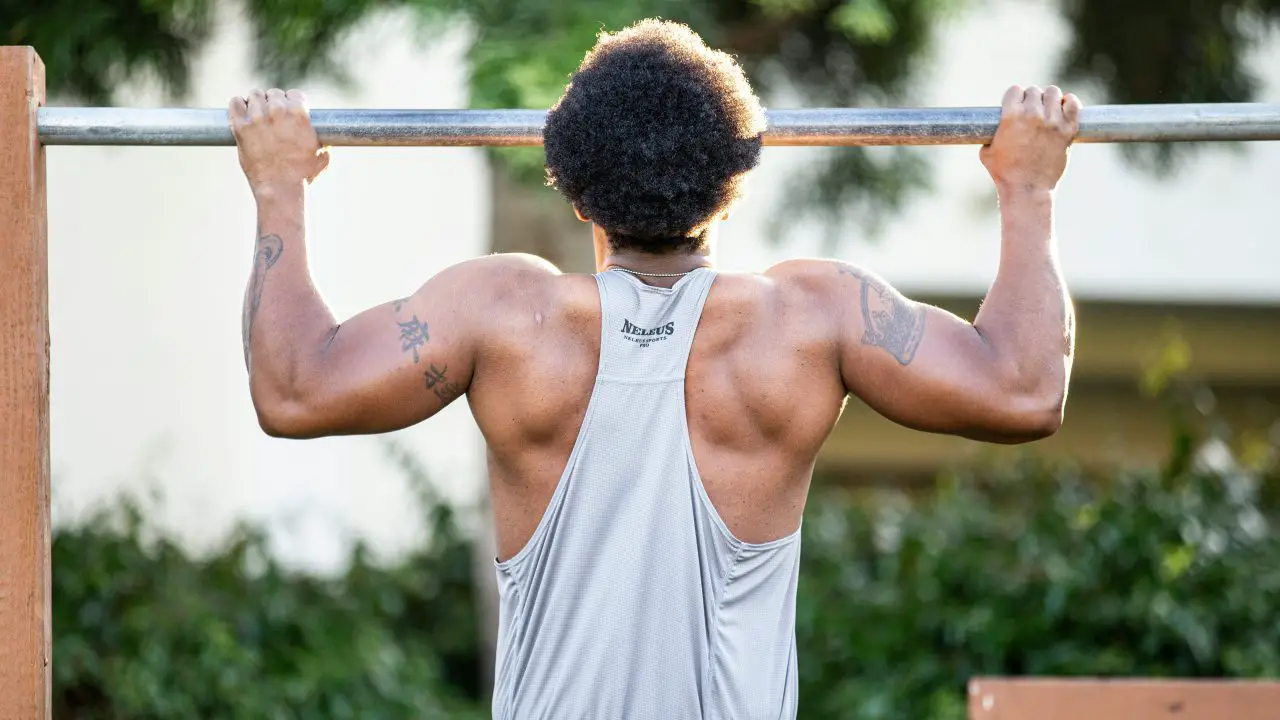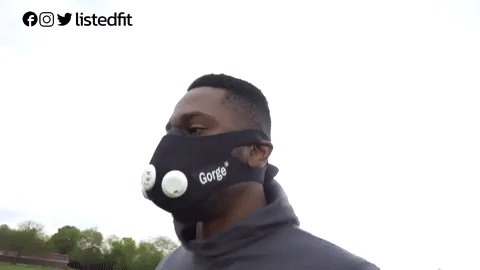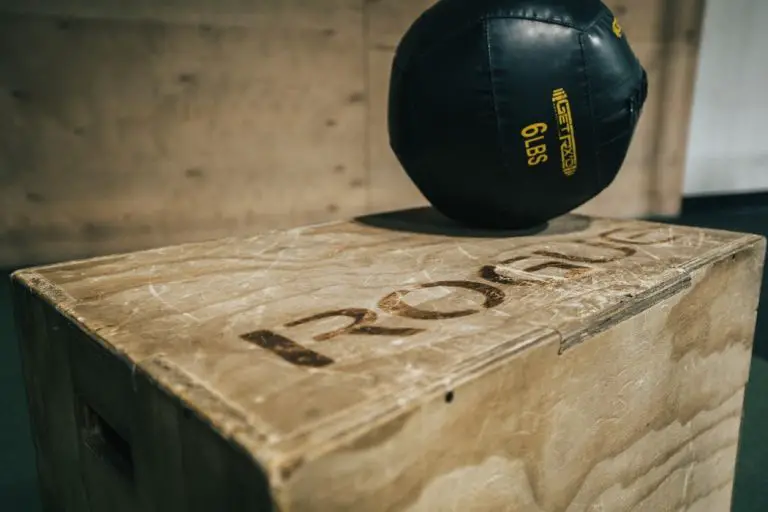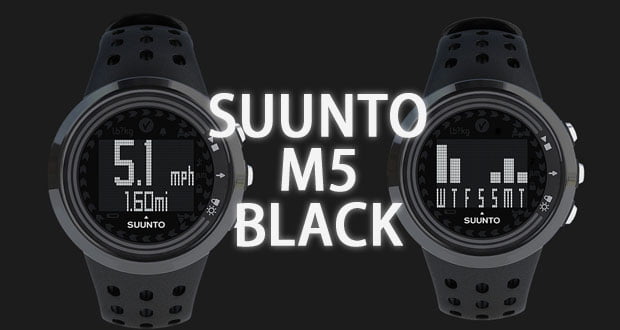Do Altitude Masks Work? A Close Look at Their Effectiveness

ListedFit is reader-supported. When you buy through links on our site, we may earn a small commission.
Throughout recent years, altitude masks have gained popularity among fitness enthusiasts as a tool for improving lung capacity and oxygen efficiency. By restricting air intake, these masks are designed to simulate the effects of altitude training and make workouts more challenging.
Quick Summary
Despite their growing use, many still wonder whether these face coverings, often called elevation or altitude masks, actually deliver the desired results for endurance athletes. There’s no shortage of opinions and studies, but it’s important to sift through the science to assess how these masks impact athletic performance.
Key Takeaways
- Altitude masks aim to enhance lung capacity, oxygen efficiency, and workout intensity
- The effectiveness of these masks remains controversial in the sports world
- To understand their significance, it’s essential to examine the science and practical case studies behind their use
Table of Contents
Understanding Altitude Masks
What Are Altitude Masks?
Altitude masks, also known as elevation masks or elevation training masks, are devices designed to simulate the lower oxygen levels found at high altitudes. These masks cover your mouth and nose, usually featuring adjustable valves that restrict the flow of air, making breathing more challenging during your workout.
Altitude Masks and Their Mechanism
The primary goal of using an altitude mask is to stress your body and train it to use oxygen more efficiently. When your body has to work harder to draw in the air due to the mask’s restriction, you’re essentially training your lungs to take deeper breaths.
So, how do these masks work? By adjusting the valves on the mask, you can control the amount of airflow going through them, simulating the difficulty one might experience while training at elevation.
The idea behind training with an altitude mask is that as your body adapts to the restricted oxygen, it’ll respond by increasing myoglobin/haemoglobin content and capillary density, which in turn, heightens oxygen transport to your muscles.
Remember, when using an altitude mask, it’s crucial not to overdo it. Listen to your body’s signals, and safely incorporate an altitude mask into your training routine as needed.
Additionally, it’s essential to note that while wearing an altitude mask might help improve lung capacity and oxygen efficiency to some extent, it doesn’t provide the full spectrum of physiological adaptations that come from genuine altitude training.
The Science Behind Altitude Masks
The Concept of Altitude Training
Have you ever wondered about the science behind altitude training? The main principle is that by training at high altitudes, your body has to adapt to the lower levels of oxygen available. This challenges your cardiovascular system and helps improve aerobic capacity and oxygen efficiency.
When you’re at a high altitude, the atmospheric pressure is lower, which means there’s less oxygen in the air. Your body compensates by producing more red blood cells to deliver oxygen to your muscles and organs more efficiently. Over time, this adaptation can lead to increased endurance and performance at lower altitudes.
The Effects of High Altitude on the Body
So, how does the body respond to high altitude? Here are some key changes that take place:
- Hypoxic condition: High altitudes induce hypoxic conditions, meaning there’s less oxygen available for your body to use. This can feel like you’re struggling to breathe, but it also forces your body to become more efficient at using the oxygen it does get.
- Increased respiration: To make up for the lack of oxygen, your body increases its respiration rate. This means you’ll breathe faster and deeper, taking in more oxygen and expelling carbon dioxide more rapidly.
- Boost in red blood cells: One of the most important adaptations to high altitude is the increase in red blood cell production. More red blood cells mean more oxygen can be transported through your blood, helping to combat the effects of hypoxia.
- Balancing nitrogen and oxygen: At high altitude, the levels of nitrogen and oxygen in your blood can be out of balance. Your body may respond by increasing the production of nitric oxide, which helps to improve blood flow and oxygen delivery.
Altitude masks aim to mimic the conditions of high altitude by restricting airflow and simulating hypoxic conditions.
But it’s important to understand that these masks don’t change the oxygen or nitrogen levels in the air you breathe, which means the actual benefits might not be as significant as training at real high altitudes.
Do Altitude Masks Work for Endurance Training?
Now, let’s dive into how altitude masks might affect endurance training. Using these masks could potentially help improve your lung capacity and cardiovascular endurance by forcing your body to work harder with less oxygen available.
In theory, when you put the mask on during a workout, you’re simulating a hypoxic environment, which makes your heart and lungs work harder to deliver oxygen to your muscles.
This inspiratory muscle training could theoretically help improve your overall cardiorespiratory fitness and enhance your endurance performance over time.
On the other hand, some experts argue that these positive effects may be short-lived and not significantly impact your athletic performance in the long run.
While the masks might help in some aspects of fitness, like improving lung capacity, they probably won’t do much for other fitness goals, such as increasing your VO2max or boosting your muscular power output.
So, wearing an altitude mask during your workouts might have some benefits in terms of lung capacity and cardiovascular endurance. But it’s essential to remember that the evidence is still limited, and it may not necessarily lead to massive improvements in your athletic performance or endurance.
Keep in mind that individual results may vary, and what works for some people might not work for others. Stay open to trying different approaches and find out what works best for you and your specific training goals.
What Are The Findings?
Research Findings
You might be curious about the science behind altitude masks. A study in the Journal of Sports Science Medicine examined the effects of altitude training masks on 24 athletes. Over the course of their research, they found that 12 of these athletes experienced improvements in respiration compared to those who didn’t use training masks. However, it’s worth noting the results are mixed, as another study found no significant difference in the average workload for the mask group and the control group.
The University of Wisconsin-La Crosse conducted a study on high altitude training masks, which found that those who wore masks had a 15% increase in ventilatory threshold (the point at which your breathing starts to increase) and respiratory compensation threshold. Based on this evidence, it seems altitude masks might have some impact on your respiratory system.
Real-World Examples of Usage
In the real world, altitude masks are often seen in gyms and training facilities. Their popularity has increased due to many athletes and fitness enthusiasts wanting to reap the potential benefits of “live high, train low” techniques. These methods typically involve living at high altitudes (e.g., Colorado Springs) and training at low altitudes, which is thought to enhance athletic performance.
You may come across altitude masks that claim to simulate altitude levels ranging from 914 m to 5486 m. One example is the Elevation Mask 2.0 by Training Mask LLC, which uses valves to adjust the simulated altitude. Always remember to be careful with your training and avoid pushing yourself too hard.
Here’s a quick summary of how altitude masks could be beneficial:
- Increased ventilatory threshold
- Improved respiratory compensation threshold
- Potential for improved athletic performance
So, while some research suggests altitude masks could have a positive impact on your training, it’s essential to be cautious and approach them with realistic expectations. Always consult a professional before incorporating any new tools or methods into your training routine. Keep it brief. Avoid exaggerating or making false claims.
The Big Critiques of Altitude Masks
Controversies and Criticisms
You might’ve noticed some athletes wearing altitude masks during their training sessions. These masks claim to simulate high altitude conditions and boost your endurance, but do they really work?
Some experts argue that altitude masks do not effectively simulate hypoxic training, as they fail to alter the oxygen concentrations in your surroundings.

One concern is that these masks primarily restrict airflow rather than simulating actual high altitude conditions, which might lead to improvements in your short-term breathing efficiency but not to long-lasting changes in cardiorespiratory fitness. A key aspect to bear in mind is that wearing an altitude mask doesn’t increase your VO₂ max or capillary density, which are essential for improving your endurance exercise performance.
Safety and Possible Side Effects
Using an altitude mask can be safe for most people, but it’s essential to consider potential side effects. Restricting your airflow can lead to fatigue, a drop in heart rate, or even a compromised ventilatory threshold. If you’re new to using an altitude mask, be cautious and start with low-resistance settings to avoid unnecessary stress on your respiratory system.
Another issue is the effect of these masks on your diaphragm, which plays a crucial role in breathing. The added resistance can put extra pressure on your diaphragm and respiratory muscles, leading to muscle fatigue. In some cases, this may impair physical performance.
When considering the price tag of altitude masks, you have to weigh the potential benefits against the costs. Spending money on a mask that may not boost your VO₂ max or cardiorespiratory fitness could be better invested in other training equipment or methods.
So, it’s up to you to decide if using an altitude mask is worth the money and potential challenges. But always remember that safety comes first – listen to your body, consult your healthcare provider or a fitness expert, and consider all aspects before jumping into this unique training approach.
Frequently Asked Questions
Do elevation masks improve athletic performance?
Although it’s true that altitude masks can restrict your air intake, they don’t exactly simulate the same conditions as high altitude training.
High altitude involves reduced air pressure and oxygen levels, which is not the case with training masks.
So, while you might notice some improvements in your breathing technique and lung capacity, don’t expect massive gains in athletic performance.
Can training masks help with altitude sickness?
Training masks don’t provide the same benefits as actual high altitude exposure, so they won’t necessarily help with altitude sickness prevention.
To acclimatise to higher altitudes, it’s best to spend time at high altitudes and allow your body to adjust gradually to the reduced oxygen levels.
Are there any risks associated with using altitude masks?
Wearing an altitude mask while exercising may cause some discomfort and difficulty breathing. But there haven’t been any significant risks associated with using them correctly.
Always follow the manufacturer’s instructions and pay attention to your body’s signals to ensure a safe workout.
What benefits can be gained from using elevation masks?
Though they don’t fully replicate high altitude conditions, using elevation masks can enhance your breathing technique, strengthen your respiratory muscles, and help improve your lung capacity.
These improvements may translate into better overall performance during your workouts.
How does hypoxic training impact fitness levels?
Hypoxic training, or training in low-oxygen conditions, can lead to increased production of red blood cells, improved oxygen delivery to muscles, and enhanced endurance.
This type of training is typically done at high altitudes or using specific equipment to mimic those conditions.
But I think it’s worth noting that altitude masks by themselves don’t create the same hypoxic environment as actual altitude training.
Is it suitable to wear training masks while running?
Yes, you can wear a training mask while running as it may help improve your breathing technique and lung capacity.
But do keep in mind that it doesn’t mimic the exact conditions of high altitude training, so the benefits might be limited.
Always remember to listen to your body and adjust the intensity of your workout if you find it too challenging with a training mask on.
Author
-
Stuart Patrick is a health and fitness lifestyle journalist who writes for ListedFit.com.
“I've spent a lot of time trying to get in shape and change my body and I realised there are so many untruths in the health and fitness industry that can slow down or stop your progress, so I share my knowledge and experience to help others to cut through the BS.”
Latest entries
 GearApril 6, 2024HOKA Kawana 2 Review – Are These The Best HOKA Gym Shoes?
GearApril 6, 2024HOKA Kawana 2 Review – Are These The Best HOKA Gym Shoes? CrossFitApril 4, 2024How Many Pull-Ups Should I Do Daily? Let’s Figure it Out…
CrossFitApril 4, 2024How Many Pull-Ups Should I Do Daily? Let’s Figure it Out… MacaMarch 17, 2024Which is Better: Black or Red Maca? Comparing Benefits and Uses
MacaMarch 17, 2024Which is Better: Black or Red Maca? Comparing Benefits and Uses FitnessFebruary 18, 2024Join the Discount Club Today!
FitnessFebruary 18, 2024Join the Discount Club Today!
Affiliates:
This post may contain affiliate links that at no additional cost to you, the site may earn a small commission. We only recommend products we would use ourselves and all opinions expressed on this site are our own.
General Advice:
The information provided in this article is for general informational purposes only. It is not intended as a substitute for professional advice. Always consult with a qualified healthcare professional before starting any new diet, exercise program, or making changes to your health routine.
Accuracy Advice:
While we strive to provide up-to-date and accurate information, the content in this article may not reflect the most current research or medical guidelines. We encourage readers to do further research and consult with professionals for more personalized advice.
Our Recommendations:
The products and services mentioned in any of our articles are recommended based on our independent research and personal experience. We are not sponsored by any company. We aim to suggest products and services we believe are of high quality and could be beneficial to our readers.









I’ve used training masks for some time now and although it does not compare with the feeling in a high altitude environment, it still feels differently and the feeling is quite nice.
A training mask? Wow. Never heard of that. But it pretty much looks like something I can use. Maybe it can gradually make me feel induced like I feel at high altitude.